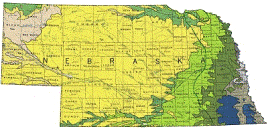United States Geological Survey

United States Geological Survey: Staff Publications
Document Type
Article
Date of this Version
2014
Citation
Urban Studies (2014) 51(14): 3,079–3,096
Abstract
Vehicle miles travelled (VMT) is a primary performance indicator for land use and transportation, bringing with it both positive and negative externalities. This study updates and refines previous work on VMT in urbanised areas, using recent data, additional metrics and structural equation modelling (SEM). In a cross-sectional model for 2010, population, income and freeway capacity are positively related to VMT, while gasoline prices, development density and transit service levels are negatively related. Findings of the cross-sectional model are generally confirmed in a more tightly controlled longitudinal study of changes in VMT between 2000 and 2010, the first model of its kind. The cross-sectional and longitudinal models together, plus the transportation literature generally, give us a basis for generalising across studies to arrive at elasticity values of VMT with respect to different urban variables.
Included in
Geology Commons, Oceanography and Atmospheric Sciences and Meteorology Commons, Other Earth Sciences Commons, Other Environmental Sciences Commons, Urban Studies and Planning Commons


Comments
United States government work